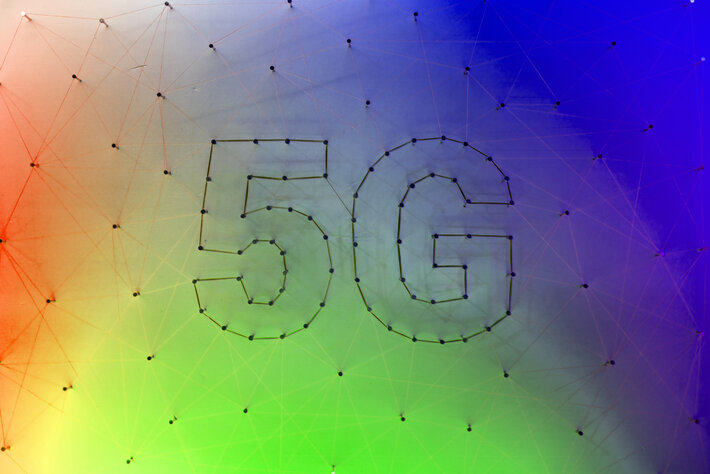Worldwide spending on Telecom Services and Pay TV Services reached $1,509 billion in 2023, an increase of 2.1% over 2022, according to the International Data Corporation (IDC) Worldwide Semiannual Telecom Services Tracker. IDC expects worldwide spending on Telecom and Pay TV services will increase by 1.4% in 2024 and reach a total of $1,530 billion.
In terms of value, the progress of the global market slowed during the latter half of 2023 as the growth rate recorded for the full year was approximately one percentage point lower than IDC’s previous forecast. This deceleration primarily resulted from slower-than-anticipated progress in the Americas, where a combination of sluggish economic growth, relatively high inflation, and saturated markets created an unfavorable environment for market development. However, in the Europe, Middle East and Africa (EMEA) region, which faced similar economic issues but where telecom operators were allowed by the regulators to increase their tariffs in line with inflation using a Consumer Price Index (CPI) model, the market grew somewhat faster than expected. It’s important to note that these tariff adjustments also led to an accelerated migration of customers toward cheaper tariff packages and more affordable operators, so the actual value growth rates were typically less than half of the nominal tariff increases.
Global Regional Telecom Services Revenue and Year-on-Year Growth (revenues in $B) | |||
Global Region | 2022 | 2023 | 2023/2022 |
Americas | $571 | $574 | 0.5% |
Asia/Pacific | $467 | $481 | 3.0% |
EMEA | $439 | $454 | 3.3% |
Grand Total | $1,478 | $1,509 | 2.1% |
Source: IDC Worldwide Semiannual Services Tracker – 2H 2023 | |||
The five-year outlook for the global connectivity services market remains positive, albeit slightly less optimistic than the previous forecast. Key central banks in the U.S. and Europe have repeatedly postponed decisions to decrease reference interest rates, impacting the potential for a more robust economic recovery. Consequently, the market environment is expected to remain relatively unfavorable for several more years. Persistent inflation will continue to affect the purchasing power of end users but will also prompt many telcos to implement upward tariff adjustments.
However, as inflation will continue to gradually decrease, the positive impact of these future tariff increases should diminish over time. The unstable political situation, fueled by conflicts in Eastern Europe and the Middle East, adds further uncertainty and is likely to dampen growth rates. In the Asia/Pacific region, slower growth can be attributed to the cooling down of the Chinese economy. Nevertheless, positive trends are anticipated due to expected healthy growth in India and other developing markets.
A graphic illustrating IDC’s 2023-2028 forecast for the worldwide telecom services market by region is available by viewing this press release on IDC.com.
An analysis by service type confirms that well-established trends persist, even in the face of changes in top-line forecasts. The mobile segment continues to be the largest, driven by the growth in mobile data usage and Machine-to-Machine (M2M) applications.
This growth offsets declines in spending on mobile voice and messaging services. Additionally, the fixed data services segment continues to grow due to the increasing demand for higher-bandwidth services. However, spending on fixed voice services is projected to deteriorate over the forecast period as the decline in traditional voice revenues is not fully compensated for by the increase in IP voice. Despite a slight decline in the Pay TV market due to the rising popularity of Video on Demand (VoD) and Over-The-Top (OTT) services, these offerings will remain an essential part of telecom providers’ multiplay services.
It is obvious that the development of the connectivity services market remains very slow and the anticipated growth of the telcos’ revenues is way too low to keep their owners happy.
“With the emergence of Artificial Intelligence (AI) and advanced analytics, the telecom operators have obtained a new powerful ally that should help them modernise their business operations and improve efficiencies,” said Kresimir Alic, the research director of worldwide telecom services at IDC. “Our research has already identified a huge number of use cases including customer service chatbots, virtual assistants and field technicians, as well as the usage of AI for network modernisation and predictive maintenance, network traffic management, personalised marketing, fraud detection and prevention, churn predictions and revenue assurance. These enhancements, together with many others that will be invented soon, should undoubtedly help telecom operators to streamline operations, enhance customer experiences and stay competitive in this rapidly evolving industry.”
Comment on this article below or via X: @VanillaPlus






